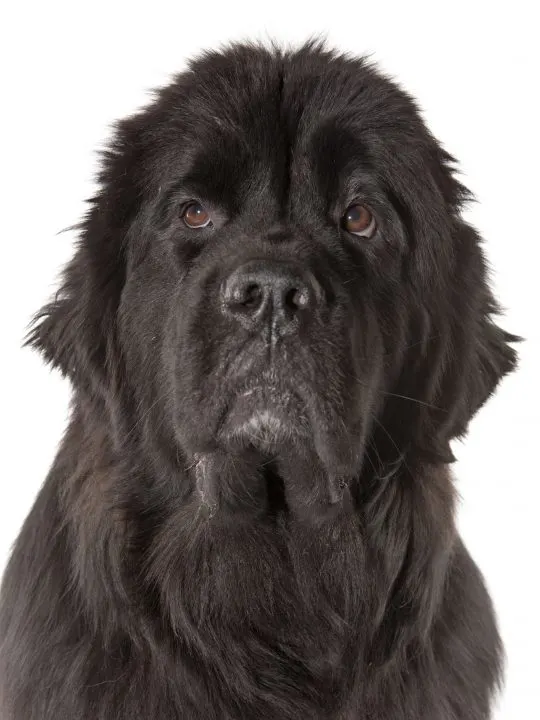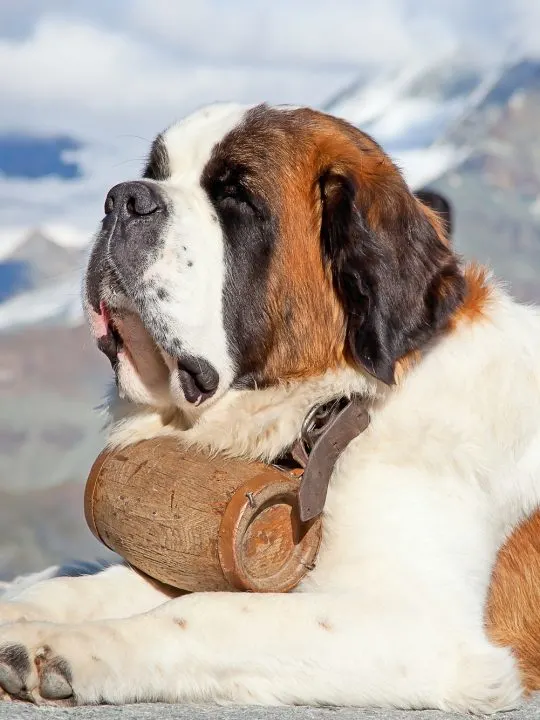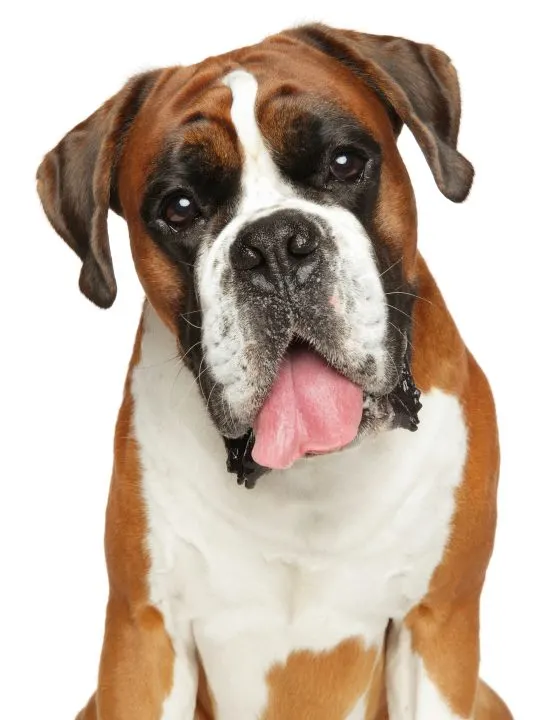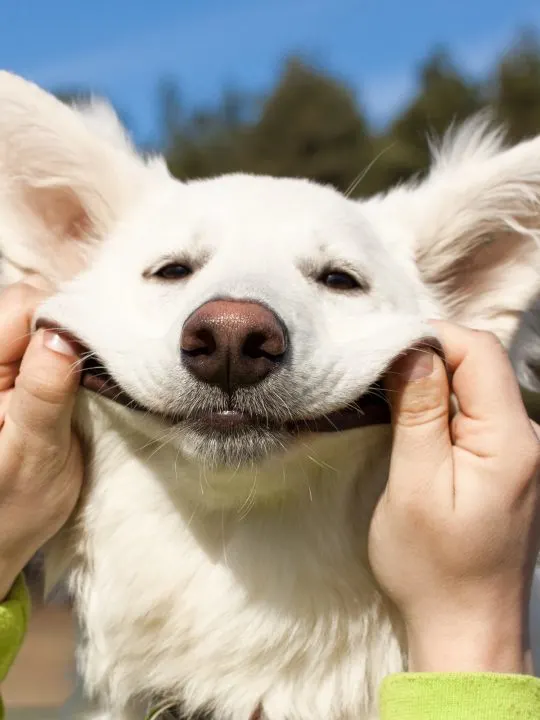If you’ve ever looked at your dog and noticed that loose skin that hangs on its muzzle, those are called jowls.
Dog jowls are the loose skin around a dog’s mouth and neck.
All dogs have jowls and while some might be more prominent than others, they all serve a purpose other than producing dog drool.
What Are Dog Jowls?
Dog jowls are the loose skin around a dog’s lips and they’re one of my favorite features of our Newfies!.
Dog breeds like the Newfoundland have big jowls that are hard to miss but a dog breed like the Cardigan Welsh Corgi’s jowls don’t stand out as much but they’re still there!
I think big jowls are pretty darn cute and for me, the bigger the better!

Why Do Dogs Have Jowls?
Regardless of being adorable, those juicy jowls serve a purpose for every canine.
Offers Protection
Jowls help to protect a dog’s face from other dogs or predators.
Their jowls will help guard against sharp teeth in a dog fight and large, droopy jowls are a moving target so it’s harder for a dog to latch on.
If a dog does latch on to the jowls, the chances of them being flung off are good!
Retains Moisture
While dogs with big droopy jowls might drool more than others, they also help to keep some water inside the mouth.
This helps to keep the jowls from drying out.

Makes Eating Easier
Newfie owners may disagree but jowls actually make it easier for dogs to keep food in their mouths and not fall all over the floor.
On the flip side, some crumbs might get lost in the jowls but will eventually find their way down or out.
Keeps Water Out
Big jowls can also help to keep out of the dog’s mouth when they’re swimming.
This is important for dogs like the Newfoundland who use their mouth to rescue people from the water.
Aides In Scent and Tracking
Dog breeds like the Bloodhound use their jowls to help scoop up scents from the ground or surface.
For hunting dogs, large jowls make it easy for them to carry their prey.
Dogs Breeds That Have Large Droopy Jowls

While all dogs have jowls some dogs have jowls that are bigger pronounced.
Some of these big jowled dogs will be heavy droolers while some might only drool when they’re begging.
Some of the more common breeds with large, droopy jowls are:
- Bassett Hound
- Bloodhound
- Boxer
- Bulldog
- Bull Mastiff
- Clumber Spaniel
- Dogue de Bordeaux
- Great Dane
- Leonberger
- Neopolitan Mastiff
- Newfoundland
- Rottweiler
- St. Bernard
Other dog breeds that can have big jowls that aren’t listed above are Labrador Retrievers, Golden Retrievers and some hounds
Common Problems With Dog Jowls
Since jowls are loose skin folds, things such as water, food, and saliva can get trapped in a dog’s jowls.
The particles and moisture can lead to bacterial and yeast infections (fungal infections) if they’re not cared for properly.
When a dog’s jowls are infected it is often referred to as lip fold dermatitis or lip fold pyoderma.
Symptoms of jowl infections can be:
- Redness or irritation of the jowls
- Discharge
- Foul smell
- Moisture
- Bumps
- Swollen jowls
In some cases, a dog may also paw at its mouth and be reluctant to eat which can be another symptom of infected jowls.
Dog jowls are often a common area where oral papillomavirus can be seen.
Papillomavirus is a virus that is spread between dogs.
Most dogs that have this virus will have several papillomas (warts) that are pink inside their mouth or on their jowls.
In severe cases, these bumps on a dog’s jowls may be painful for some dogs and they may bleed.
The papillomavirus can be seen in any dog breed regardless of the size of their jowl.
Sometimes a dog’s jowls will have a sour or foul smell to them which can mean that an infection is present.
Swollen jowls can often be caused by a bite or wound in the mouth or neck.
If the wound becomes infected a dog may also have a fever and refuse to eat.
Caring For Dog Jowls

If your dog has large jowls, it’s important to get them used to have their mouth touched.
This is best done when the dog is a puppy so that they don’t associate their mouth being touched as a negative experience.
Removing debris and excess moisture from your dog’s jowl is the best way to keep them healthy.
It’s always best to speak with your veterinarian about the best products for cleaning your dog’s jowls.
Veterinarians will often medicated wipes that are safe to use or they can recommend a product that you can get at a local dog store.
For dog breeds that drool a lot, having a drool towel on hand or a dog bib is an easy way to keep the jowls dry for short periods of time.
If you notice that your dog has bumps on the jowls, active bleeding or a foul odor it’s best to reach out to your vet and schedule an appointment.
Conclusion
I love big jowls.
I love to grab them and kiss them and I also don’t mind wiping up the slobber that drips from them.
But they do require some TLC to make sure they stay in tip-top shape.